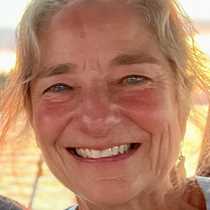South Shetland Islands: Barrentos Island & Deception Island
This morning we arrived at Barrentos Island in the South Shetland Islands, northwest of the Antarctic Peninsula. We saw penguins! Barrentos Island has nesting pairs of both chinstrap and gentoo penguins, and we were able to get close looks at both species. Occasionally a penguin that was incubating eggs would stand, and if we looked carefully we could glimpse an egg on a rock and pebble nest. And, of course, a nest can always be improved! We watched many penguins nonchalantly steal rocks from their neighbors and carry them to their own nest. (The rocks are always better at the neighbor’s nest!)
We were very excited to find a king penguin on Barrentos! They are not commonly seen in this region, so that was a delightful sighting. They are much taller than the chinstraps and gentoos, and the yellow on its head made it easy to identify. We walked the short distance across the island, and found two yearling elephant seals sleeping on the beach. Many penguins were on the beach, too, standing or nesting beside enormous whale vertebrae, reminders from whaling days.
As the ship traveled to the southwest towards Deception Island, we warmed up, rested, and learned about penguins. By late afternoon we arrived at Deception Island, and surf conditions were calm enough that we were able to make a landing at Bailey Head. The island is volcanic, and the dramatic cliffs at Bailey Head are made from countless layers of volcanic ash.
Near our Zodiac landing site on the black pebble beach there were hundreds of chinstrap penguins. Now and then a group of them arrived from the ocean, and they popped up onto the pebbles like popcorn. So speedy and agile while swimming underwater, they look comical on land. Even so, they walked up the steep beach, and continued onward to nesting sites far inland, and far uphill. We watched with smiling awe at their upright, cute efficiency.
The incoming birds walked on a pink ‘penguin highway’ (colored pink by krill-colored guano). Somehow, each bird managed to arrive to its own nest, to relieve its mate who had been incubating eggs and fasting for about a week. Arriving birds with full stomachs appeared perfectly white and clean. At the crowded nesting colonies, birds did not remain clean for long. The birds that had been warming the eggs were far dirtier, ready for a ‘bath’ and a meal. More than 50,000 pairs of chinstrap penguins nest at this site!




